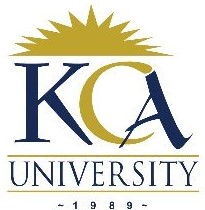 UNIVERSITY EXAMINATIONS: 2016/2017
UNIVERSITY EXAMINATIONS: 2016/2017
EXAMINATION FOR THE DEGREE OF BACHELOR OF SCIENCE IN
INFORMATION TECHNOLOGY/ BACHELOR OF SCIENCE IN
INFORMATION AND COMMUNICATIONS TECHNOLOGY
BIT3107BCT 3101 WIRELESS NETWORKS TECHNOLOGIES
FULL TIME/PART TIME/DISTANCE LEARNING
DATE: AUGUST, 2017 TIME: 2 HOURS
INSTRUCTIONS: Answer Question One & ANY OTHER TWO questions.
QUESTION ONE [30 MARKS]
a) Discuss :
(i) Why wireless LANs were never popular in the beginning 4 Marks
(ii) Why wireless LANs have become very popular 4 Marks
b) State two advantages and two disadvantages of:
(i) FDMA 4 Marks
(ii) TDMA 4 Marks
c) State the functions of the following cellular network components:
(i) Base Transceiver Station (BTS). 2 Marks
(ii) Base Station Controller (BSC). 2 Marks
(iii) Visitor Location Register (VLR). 2 Marks
d) Outline the differences between Frequency Division Multiplexing and Time Division
Multiplexing. 4 Marks
e) Explain briefly four techniques that can be used to increase capacity in mobile networks.
4 Marks
QUESTION TWO [20 MARKS]
a) With the aid of diagrams, explain how the following antennae operate:
(i) Yagi 3 Marks
(ii) Parabolic Dish 3 Marks
b) Mobile phone networks use the concept of “frequency re-use” in deployment of their
services.
(i) Define frequency re-use and give one fundamental requirement that should
govern frequency re-use. 2 Marks
(ii) Determine the portion of the frequency band that can be used in one cell in a 4-
cell reuse pattern and 7-cell reuse pattern, assuming a 25 MHz band allocated to the
operator. 2 Marks
(iii) If the uplink frequencies are 898.3MHz and 912.5 MHz, what are the
corresponding downlink frequencies? 2 Marks
c) Describe the structure of a satellite communication system including VSAT.
8 Marks
QUESTION THREE [20 MARKS]
a) Explain the following terms: 5 Marks
(i) Full Duplex System.
(ii) Multiplexer.
(iii) Scatternet.
(iv) Spread Spectrum.
(v) Mobile Station.
b) Describe how the following components function in RFID system
(i) Antenna 2 Marks
(ii) Tags/transponders 3 Marks
(iii) Readers 2 Marks
c) Wireless LANs can accommodate various network topologies. The standard defines a
BSS as a group of stations that communicate with each other. In this regard, discuss
briefly the following 802.11 toplogies:
(i) Ad hoc networks. 2 Marks
(ii) Basic Service Set (BSS) 2 Marks
(iii) Extended Service Set (ESS) 2 Marks
d) Explain the concepts of cell-splitting, and cell-sectoring 2 Marks
QUESTION FOUR [20 MARKS]
a) PCM (Pulse Code Modulation) is the process in which a signal is sampled, and the
magnitude of the each sample with respect to a fixed reference is quantized and converted by
coding to a digital signal.
(i) Define sampling, quantization and encoding. 3 Marks
(ii) State Nyquist Sampling Theorem 2 Marks
(iii) Voice has frequency ranging from (approximately) 0 to 4000 Hz. To reconstruct
the signal when digitized, at what rate should samples be taken? 2 Marks
b) Telecommunications systems use transmission media of various types. Explain why, with
any communications medium, the received signal will differ from the transmitted signal.
3 Marks
c) Explain briefly three features of
(i) Circuit switching. 3 Marks
(ii) Packet switching 3 Marks
d) (i) Differentiate between Fixed-assignment multiple access (FAMA) and Demandassignment multiple access (DAMA) 2 Marks
(ii) Describe a typical GEO satellite frequency allocation 2 Marks
QUESTION FIVE [20 MARKS]
a) Briefly describe the following types of noise in data communications:
(i) Thermal noise 2 Marks
(ii) Inter-modulation Noise 2 Marks
(iii) Crosstalk 2 Marks
b) Discuss in detail the following with reference to visible time, orbit time, usage and delay
of:
(i) LEO satellites 4 Marks
(ii) MEO satellites 4 Marks
c) With the aid of appropriate examples, briefly explain why telecommunications is critical
to the operations of modern business. 6 Marks
